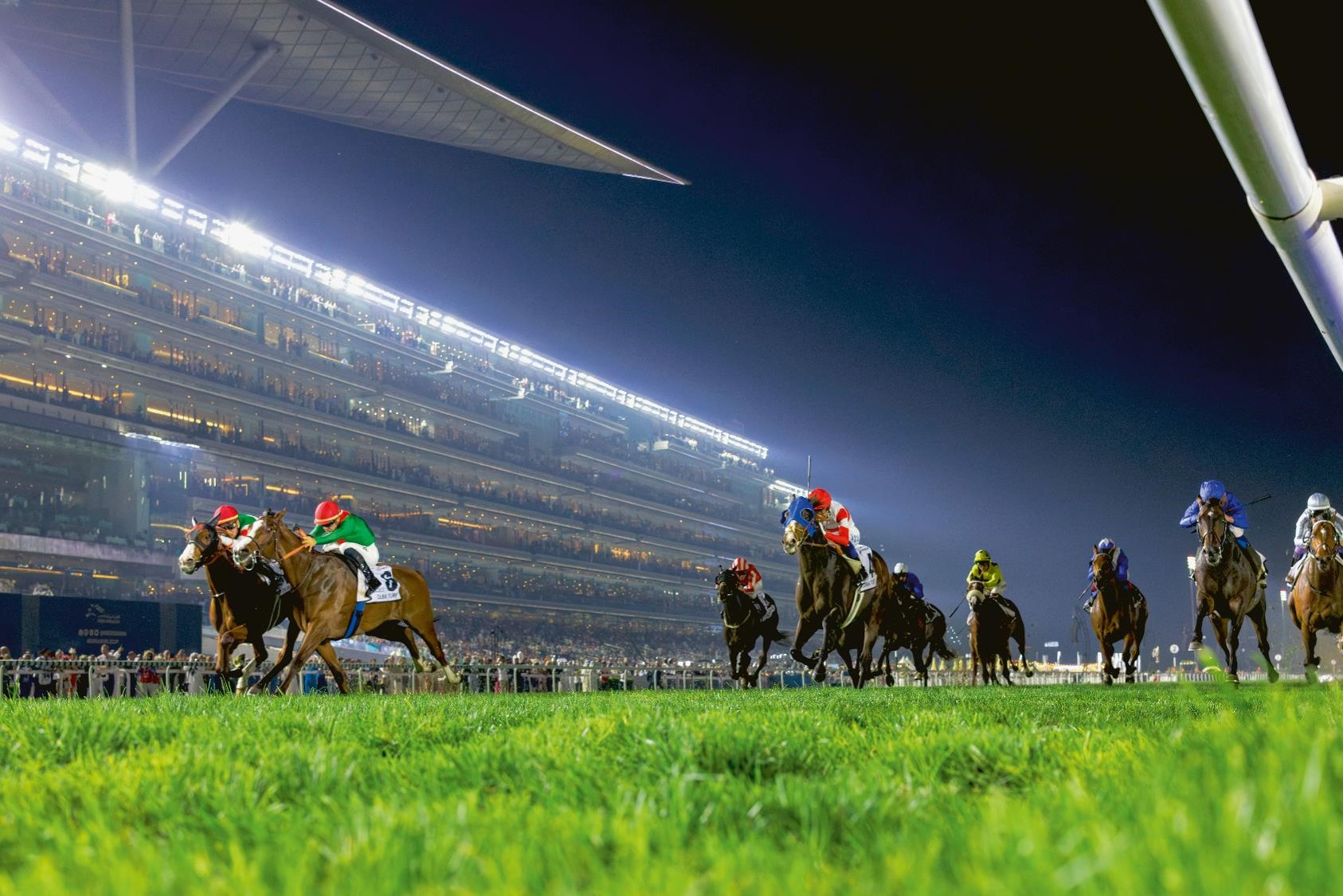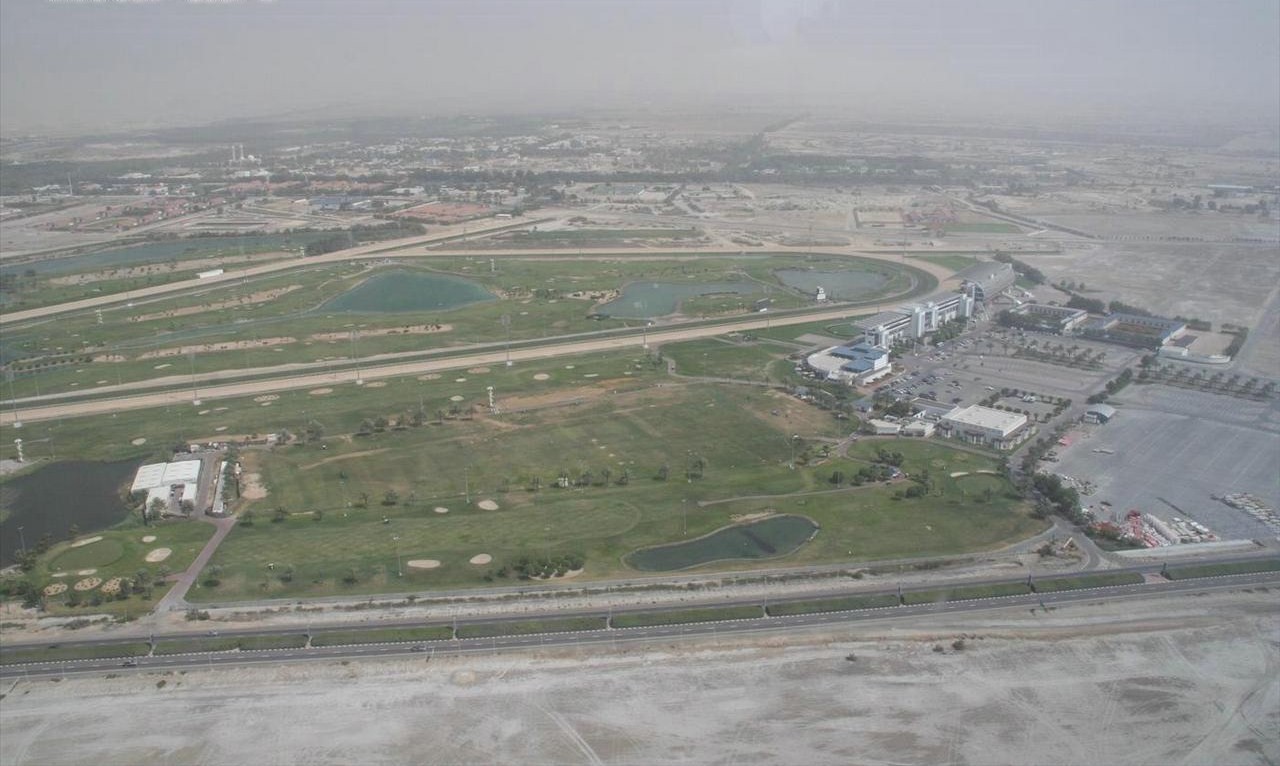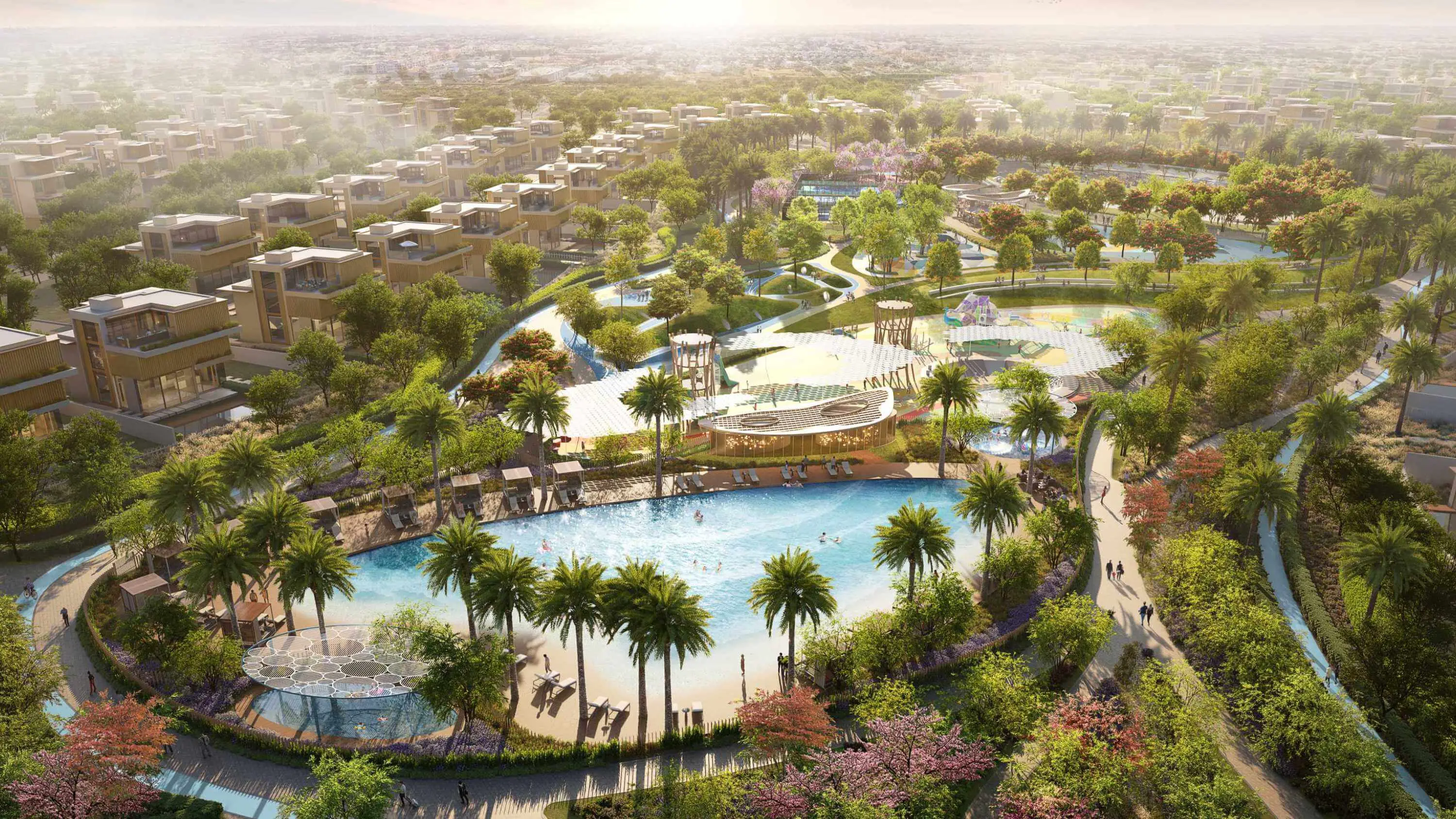The Birth of a Racing Legacy
When the inaugural Dubai World Cup was held at Nad Al Sheba Racecourse on March 27, 1996, few outside the horse racing world fully appreciated the significance of the moment. Yet this event, conceived by Sheikh Mohammed bin Rashid Al Maktoum, would transform not only Nad Al Sheba but Dubai's global reputation in the decades that followed.
With a then-unprecedented purse of $4 million, the first Dubai World Cup immediately became the world's richest horse race. The winner of that historic first race was the legendary American thoroughbred Cigar, ridden by Jerry Bailey and trained by Bill Mott. Cigar's victory in front of a capacity crowd set the standard for the international prestige that would come to define this event.
"The Dubai World Cup was never simply about hosting a horse race. It was about establishing Dubai as a place where the impossible becomes possible, where excellence is the only acceptable standard."
– Sheikh Mohammed bin Rashid Al Maktoum
But to understand how Nad Al Sheba achieved its prominence in global horse racing, we must look beyond this single event to the deeper cultural connections and visionary leadership that made it possible.
Arabian Heritage and Equestrian Tradition
The rise of Nad Al Sheba as a world-class racing destination is firmly rooted in the UAE's profound cultural connection to horses. For centuries, Arabian horses have been integral to Bedouin life, valued not just as working animals but as beloved companions and status symbols.
The Arabian horse breed, one of the oldest and most influential in the world, was developed in this region over thousands of years. Prized for their speed, endurance, intelligence, and distinctive appearance, Arabian horses have influenced virtually every modern racing breed, including the Thoroughbred.
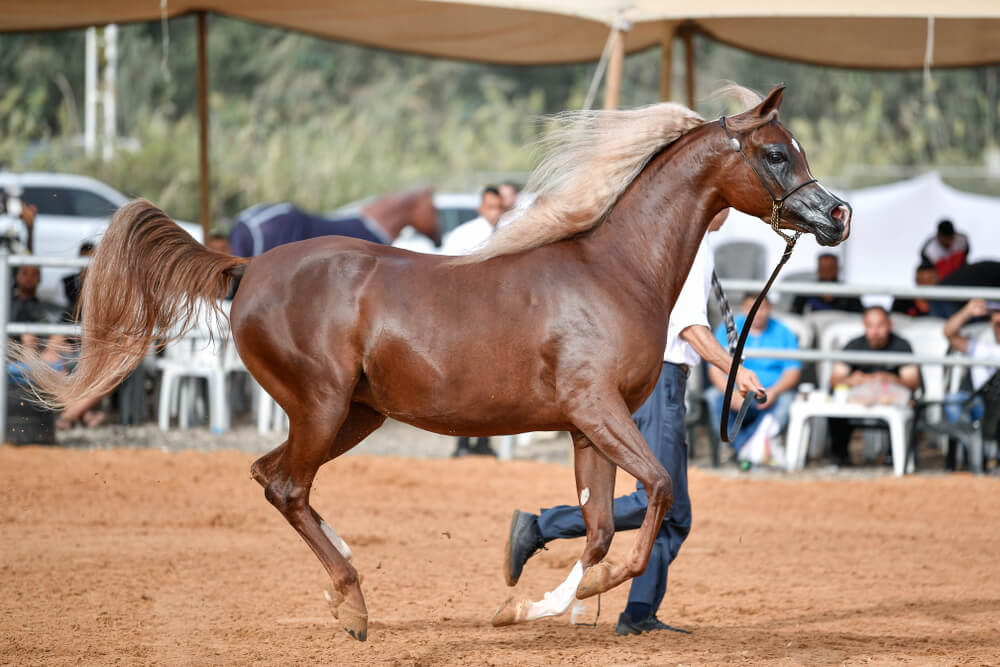
This deep cultural affinity for horses provided the foundation upon which Nad Al Sheba's racing tradition would be built. While informal races had been held in the area for generations, the formalization of these activities began in the 1970s and 1980s as Dubai started its rapid development.
The Nad Al Sheba Racecourse Era
The establishment of the Dubai Racing Club in 1977 marked the beginning of organized horse racing in the emirate, but it was the opening of the Nad Al Sheba Racecourse in 1992 that truly elevated Dubai's status in the racing world.
The facility was developed to international standards, featuring both dirt and turf tracks to accommodate different racing styles. The grandstand could hold thousands of spectators, while state-of-the-art stabling facilities ensured the welfare of the valuable horses competing there.
From 1992 to 2009, Nad Al Sheba Racecourse hosted not only the Dubai World Cup but a full calendar of races that attracted competitors and spectators from around the globe. The racecourse quickly became known for its excellent facilities and generous prize money, helping to establish Dubai as a serious player in international horse racing.
Under Sheikh Mohammed's guidance, the Dubai World Cup evolved into the centerpiece of a racing carnival that spanned multiple weeks and featured races for various classes of horses. This approach ensured that Nad Al Sheba remained active throughout the racing season, rather than focusing exclusively on a single prestigious event.
The Dubai World Cup: Growth and Evolution
Over the years, the Dubai World Cup continued to grow in both prize money and prestige. By 2000, the purse had increased to $6 million, maintaining its status as the world's richest horse race. The event attracted not only the fastest horses but also royalty, celebrities, and racing enthusiasts from around the world.
The list of winners reads like a who's who of racing greatness: Cigar, Silver Charm, Dubai Millennium, Pleasantly Perfect, and Invasor are just a few of the champions who triumphed in the challenging 2000-meter (approximately 1¼ miles) race on Nad Al Sheba's dirt track.
Perhaps the most emotionally significant victory came in 2000 when Dubai Millennium, a horse bred by Sheikh Mohammed and named in anticipation of this very race, stormed to a spectacular win. His victory by six lengths remains one of the most dominant performances in the event's history and represented the fulfillment of a dream for his owner and breeder.
"Dubai Millennium's victory in 2000 was like something from a storybook. A horse specifically bred for this race, named in anticipation of winning in the millennium year, delivering one of the most spectacular performances we've ever seen. These are the moments that make racing special."
– Jim McGrath, racing commentator
Beyond the main event, the Dubai World Cup card expanded to include multiple high-value races, creating a full day of world-class competition. This approach maximized the international impact of the event and provided opportunities for horses specializing in different distances and surfaces.
The Meydan Revolution
As significant as Nad Al Sheba Racecourse was in establishing Dubai's racing credentials, it would ultimately serve as a precursor to something even more ambitious. In 2010, the Dubai World Cup moved to its new home at the magnificent Meydan Racecourse, a venue that would redefine expectations for racing facilities worldwide.
The development of Meydan represented not just an upgrade but a complete reimagining of what a racecourse could be. With its mile-long grandstand, five-star hotel, IMAX theater, and numerous restaurants and lounges, Meydan was designed as a multi-purpose destination rather than a single-use sporting venue.

While Meydan technically created a new district adjacent to Nad Al Sheba, the two areas remain closely linked both geographically and in the public consciousness. The development of Meydan further enhanced the prestige of the surrounding area, contributing to Nad Al Sheba's reputation as one of Dubai's most desirable residential locations.
To mark the move to this extraordinary new facility, the Dubai World Cup purse was increased to $10 million in 2010, ensuring it remained the world's richest horse race. The winner of the first Dubai World Cup at Meydan was Gloria de Campeao, trained by Pascal Bary and ridden by T.J. Pereira, who prevailed in one of the closest finishes in the race's history.
The Racing Experience at Meydan
For visitors to Meydan Racecourse, the Dubai World Cup offers an experience that extends far beyond the races themselves. The event has evolved into a celebration of luxury lifestyle, fashion, and entertainment that rivals other global sporting spectacles like the Monaco Grand Prix or Wimbledon.
The Dubai World Cup meeting typically features nine high-value races, culminating in the main event. Throughout the day, spectators can enjoy world-class hospitality in various settings, from exclusive private boxes to elegant restaurants overlooking the track.
Fashion has become an integral part of the Dubai World Cup experience, with a Style Stakes competition rewarding the most elegantly dressed attendees. The event attracts international fashion designers and stylists, while luxury brands vie for visibility among the sophisticated crowd.
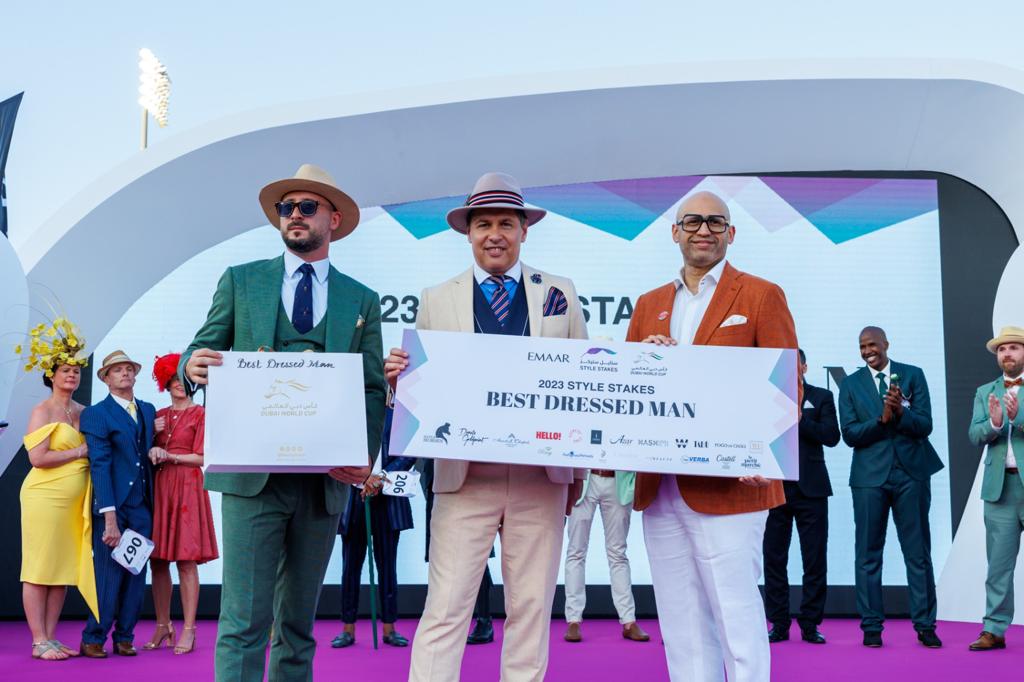
Entertainment at the Dubai World Cup has featured performances by international superstars like Jennifer Lopez, Kylie Minogue, Janet Jackson, and Seal. These concerts, held after the racing concludes, transform the event into a full day and evening of entertainment.
Economic Impact and Global Influence
The economic impact of the Dubai World Cup extends far beyond the racecourse itself. During World Cup season, Dubai experiences a significant influx of international visitors, benefiting hotels, restaurants, retailers, and other businesses throughout the city.
The event generates substantial global media coverage, enhancing Dubai's visibility and reinforcing its position as a luxury destination. Television broadcasts reach millions of viewers worldwide, while digital coverage continues to expand the event's reach to new audiences.
For the horse racing industry, the Dubai World Cup and associated races offer valuable opportunities beyond prize money. Success at Meydan enhances a horse's breeding value and can lead to lucrative stallion or broodmare careers after racing. The international nature of the event also facilitates valuable connections between owners, trainers, and industry professionals from different regions.
"The Dubai World Cup doesn't just benefit the winners. It creates a global showcase for the sport, bringing together the best horses, jockeys, and trainers from different racing jurisdictions. These international connections have strengthened the entire industry."
– John Ferguson, bloodstock advisor
The Dubai World Cup has inspired similar high-value races in other countries, contributing to a more globalized racing calendar. Events like the Saudi Cup, which debuted in 2020 with a $20 million purse, have followed Dubai's model of using prestigious racing to enhance national prestige and attract tourism.
The Godolphin Factor
No discussion of Dubai's rise as a racing power would be complete without mentioning Godolphin, the global racing operation founded by Sheikh Mohammed in 1992. Named after the Godolphin Arabian, one of the three foundation sires of the modern Thoroughbred, this operation has become one of the most successful in racing history.
Godolphin maintains training facilities in Dubai, the United Kingdom, Australia, the United States, and other racing jurisdictions, allowing it to compete at the highest levels year-round. The operation's distinctive royal blue silks have become a familiar sight in winner's circles around the world.
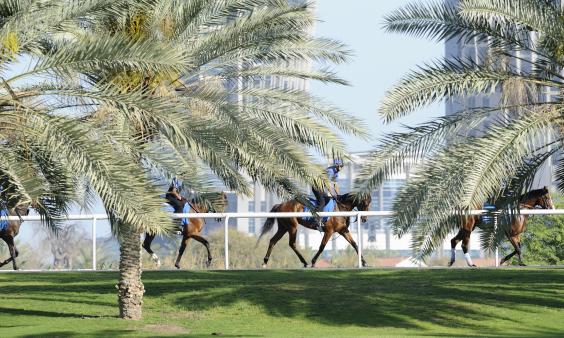
Godolphin's presence at the Dubai World Cup each year adds another layer of significance to the event. While Sheikh Mohammed's role as host prevents him from actively participating in the winner's presentation when his horses are successful, Godolphin victories at Meydan are particularly meaningful for local fans.
Thunder Snow, trained by Saeed bin Suroor for Godolphin, made history by winning consecutive Dubai World Cups in 2018 and 2019, becoming the first horse to achieve this feat. These victories were celebrated as national triumphs, reinforcing the deep connection between the race and Dubai's identity.
Beyond Racing: Nad Al Sheba's Equestrian Culture
While the Dubai World Cup represents the pinnacle of Nad Al Sheba's equestrian tradition, the area's connection to horses extends far beyond this single event. Throughout the year, various equestrian activities keep this heritage alive and accessible to residents and visitors.
The Dubai Equestrian Club, located in the Nad Al Sheba district, offers riding lessons, dressage training, and other horseback activities for enthusiasts of all skill levels. This facility helps to ensure that horsemanship remains a living tradition rather than simply a spectator sport.
Endurance racing, a discipline in which the UAE has achieved particular success, also has a strong presence in the area. These long-distance races, typically covering 100-160 kilometers (60-100 miles), test the stamina and condition of both horse and rider while reflecting the Bedouin tradition of desert travel on horseback.
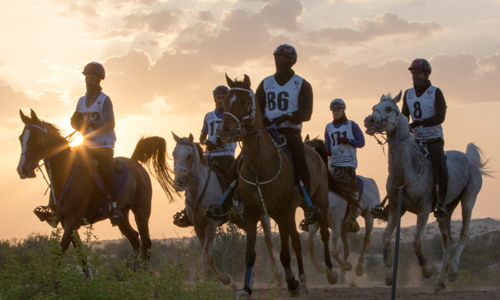
For visitors interested in learning more about the Arabian horse breed and its cultural significance, several facilities in and around Nad Al Sheba offer educational tours and demonstrations. These experiences provide valuable context for understanding why horse racing has become such an important part of Dubai's identity.
Looking to the Future
As the Dubai World Cup approaches its 30th anniversary, it continues to evolve while remaining true to its founding vision. The race's purse, which reached $12 million in 2019, ensures that it remains among the world's most valuable, even as new competitors have emerged.
The development of the Meydan district is ongoing, with new residential communities, commercial spaces, and leisure facilities enhancing the area's appeal. These additions complement the racecourse while creating a more diverse and sustainable neighborhood.
Digital technology is expanding access to the Dubai World Cup, with enhanced broadcast options, virtual reality experiences, and social media engagement reaching audiences who cannot attend in person. These innovations are particularly important for attracting younger fans to the sport.
Sustainability has become an increasing focus for both Meydan Racecourse and the wider Nad Al Sheba area. Water conservation, energy efficiency, and responsible land use are now key considerations in all development and operational decisions.
Conclusion: A Racing Tradition for the Ages
From its humble beginnings to its current status as a global spectacle, the Dubai World Cup perfectly encapsulates the remarkable journey of both Nad Al Sheba and Dubai itself. What began as a bold vision has become an institution that honors traditional values while embracing innovation and excellence.
For residents of Nad Al Sheba, the presence of world-class racing facilities offers more than just a prestigious address. It provides a living connection to cultural heritage, a source of national pride, and an annual opportunity to see the world's finest horses and jockeys compete on home soil.
As Dubai continues to evolve, the Dubai World Cup and its magnificent home at Meydan remain powerful symbols of what can be achieved through ambition, expertise, and respect for tradition. In Nad Al Sheba, racing is not just a sport but a cultural cornerstone that bridges past, present, and future.
"What makes the Dubai World Cup special is not just the prize money or the facilities, impressive though they are. It's the way this event has created its own traditions while honoring the deep equestrian heritage of this region. That balance of innovation and respect for history is Dubai at its best."
– Laura King, international racing journalist
As another Dubai World Cup approaches, the eyes of the racing world will once again turn to Nad Al Sheba, where the thundering of hooves across the desert sands continues to echo through the centuries, connecting generations of horse lovers in a timeless celebration of speed, beauty, and sporting excellence.

